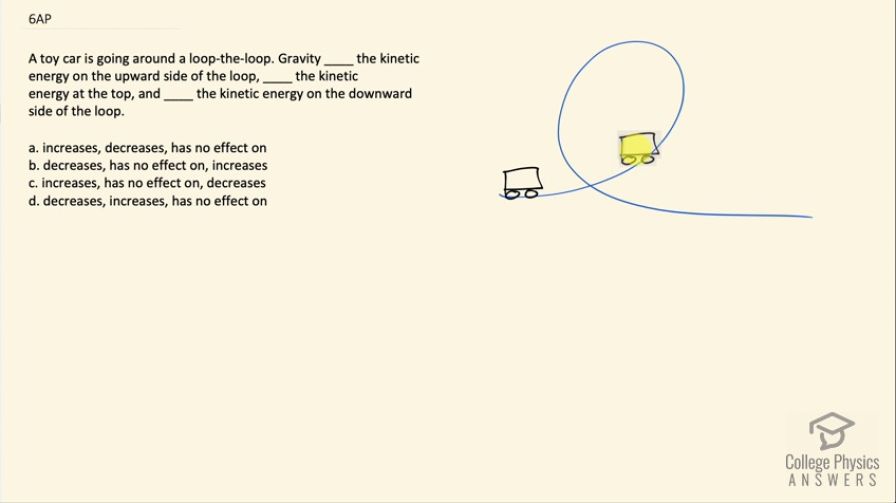Question
A toy car is going around a loop-the-loop. Gravity ____ the kinetic energy on the upward side of the loop, ____ the kinetic energy at the top, and ____ the kinetic energy on the downward side of the loop.
- increases, decreases, has no effect on
- decreases, has no effect on, increases
- increases, has no effect on, decreases
- decreases, increases, has no effect on
Final Answer
(b)
Solution video
OpenStax College Physics for AP® Courses, Chapter 7, Problem 6 (Test Prep for AP® Courses)

vote with a rating of
votes with an average rating of
.
Video Transcript
This is College Physics Answers with Shaun Dychko. This toy car is gonna go around this loop-the-loop and as it's going up through the loop-the-loop, its speed is slowing gravity is pulling it down, gravity is pulling in the opposite direction to its velocity because at this position, its velocity is upwards and gravity is pulling downwards and so its acceleration is down— opposite to its velocity— and so that means it's slowing down. So gravity is decreasing its kinetic energy then because kinetic energy is proportional to the speed squared— kinetic energy is one-half mass times velocity squared— so as this velocity decreases so does the kinetic energy. So it's slowing down as it goes up due to the gravity accelerating it downwards and it is decreasing its kinetic energy. At the top, there is no change in its kinetic energy as a result of gravity; there might be a change due to some friction but let's ignore friction and just talk about the gravity then; the gravity is perpendicular to its velocity and so it has no change on its speed and so it has no effect and then as it's going down the other side of the loop-the-loop, the gravity is increasing its speed and therefore increasing its kinetic energy. So the answer to this question is (b).